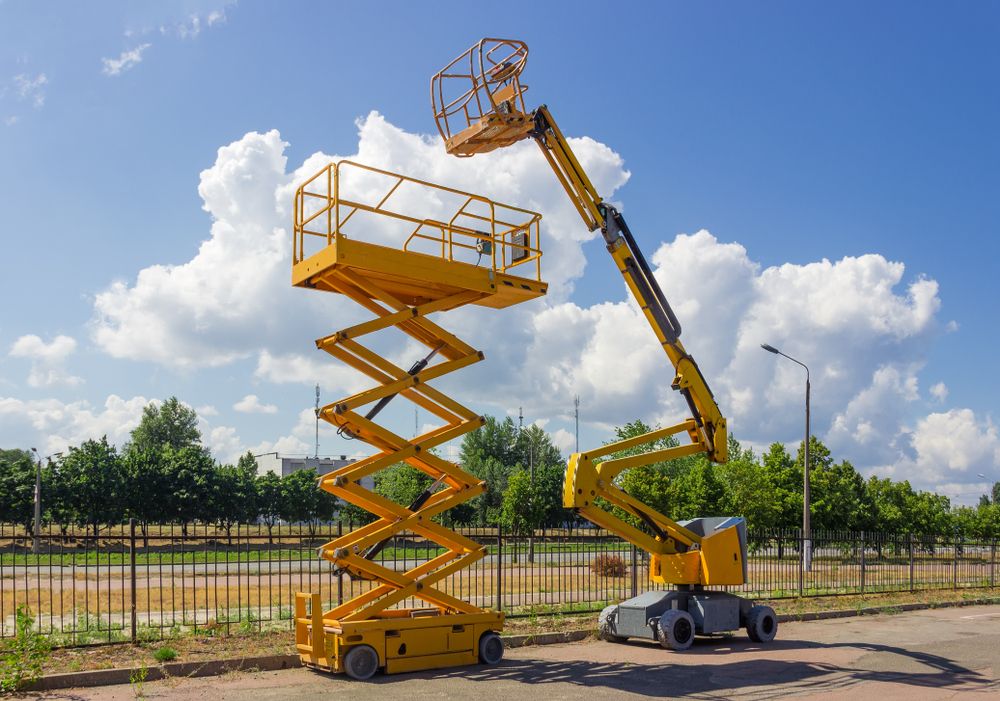Ensuring Safe Operation of Aerial Lifts on Job Sites

Upholding Safety Standards: Employer Responsibilities in Ensuring Safe Operation of Aerial Lifts on Job Sites
Aerial lifts, also known as elevated work platforms (EWPs), are indispensable tools in various industries, providing workers with access to elevated work areas for tasks such as maintenance, construction, and installation. However, operating aerial lifts poses inherent risks, including falls, electrocution, and equipment malfunctions, which can result in serious injuries or fatalities if not managed effectively. In Canadian workplaces, employers have a legal and moral obligation to ensure their employees are trained, equipped, and supervised to operate aerial lifts safely. This article will explore the responsibilities of employers in ensuring the safe operation of aerial lifts on job sites, emphasizing the importance of comprehensive training, adherence to safety protocols, and proactive risk management.
- Regulatory Framework:
- Occupational health and safety legislation in Canada, at both the federal and provincial/territorial levels, establishes regulations and standards governing the safe operation of aerial lifts. These regulations outline specific requirements for training, equipment maintenance, and workplace practices to prevent accidents and injuries.
- Federal regulations, such as the Canada Labour Code, and provincial/territorial regulations, such as the Occupational Health and Safety Act (OHSA) in Ontario or the Occupational Health and Safety Regulation in British Columbia, set forth legal obligations for employers to ensure the safety of aerial lift operations.
- Employer Responsibilities:
- Employers have primary responsibility for creating and maintaining a safe work environment for their employees, including those who operate aerial lifts. Key responsibilities include:
- Providing comprehensive training to aerial lift operators, covering equipment operation, hazard recognition, emergency procedures, and fall protection measures.
- Ensuring that aerial lift operators are adequately supervised and competent to perform their duties safely.
- Conducting regular inspections, maintenance, and repairs of aerial lift equipment to ensure it is in good working condition and compliant with safety standards.
- Establishing and enforcing safety protocols and procedures for aerial lift operations, including pre-operation checks, use of personal protective equipment (PPE), and communication practices.
- Conducting risk assessments to identify hazards associated with aerial lift operations and implementing measures to mitigate risks, such as avoiding overhead power lines, maintaining stable ground conditions, and securing work platforms.
- Employers have primary responsibility for creating and maintaining a safe work environment for their employees, including those who operate aerial lifts. Key responsibilities include:
- Comprehensive Training:
- Proper training is essential for aerial lift operators to understand the equipment’s capabilities, limitations, and safe operating practices. Employers must ensure that all aerial lift operators receive comprehensive training before operating the equipment and provide refresher training as needed.
- Training should cover:
- Equipment familiarization, including controls, safety features, and emergency shut-off procedures.
- Safe operating practices, such as proper platform positioning, load capacity limits, and maneuvering techniques.
- Hazard recognition and avoidance, including electrical hazards, fall hazards, and environmental hazards.
- Emergency procedures, including rescue and evacuation protocols in the event of equipment malfunction or operator injury.
- Adherence to Safety Protocols:
- Employers must establish and enforce strict adherence to safety protocols and procedures for aerial lift operations. This includes:
- Conducting pre-operation inspections of aerial lift equipment to ensure it is in safe working condition and free from defects or damage.
- Using appropriate fall protection equipment, such as harnesses and lanyards, when working at heights or on elevated platforms.
- Implementing proper barricades, warning signs, and traffic control measures to prevent unauthorized access to work areas where aerial lifts are in use.
- Ensuring that operators are trained and authorized to perform specific tasks and operate specific types of aerial lift equipment.
- Employers must establish and enforce strict adherence to safety protocols and procedures for aerial lift operations. This includes:
- Proactive Risk Management:
- Employers should adopt a proactive approach to risk management by identifying and mitigating hazards associated with aerial lift operations before they lead to accidents or injuries.
- This may involve conducting regular risk assessments, job hazard analyses, and safety audits to identify potential hazards and implement corrective actions.
- Employers should also encourage workers to report safety concerns or near misses related to aerial lift operations to facilitate continuous improvement in safety practices.
- Employers should adopt a proactive approach to risk management by identifying and mitigating hazards associated with aerial lift operations before they lead to accidents or injuries.
Operating aerial lifts presents significant risks that must be managed effectively to protect the safety and well-being of workers. Employers have a legal and moral obligation to ensure their employees are trained, equipped, and supervised to operate aerial lifts safely. By providing comprehensive training, adhering to safety protocols, conducting regular equipment inspections, and adopting a proactive approach to risk management, employers can create a safe work environment where aerial lift operations are performed with confidence and efficiency. Through collaboration, communication, and commitment to safety, employers can fulfill their responsibilities and prevent accidents and injuries associated with aerial lift operations on job sites.
Categories
- Aerial Lift
- ATV Training
- Bear Awareness
- Chainsaw Training
- Confined Space
- Defensive Driving
- Forklift Training
- Lockout Tagout
- Online Safety Training
- Overhead Crane
- Pipeline Construction Safety Training
- Propane Handling
- Safety Training Benefits
- Scissor Lift
- Skid Steer Training
- Space Awareness
- TDG
- Telehandler Forklift
- Traffic Control
- Train the Trainer course
- Training Course
- Uncategorized
- WHMIS
- Workplace Harassment and Violence Preventiont
